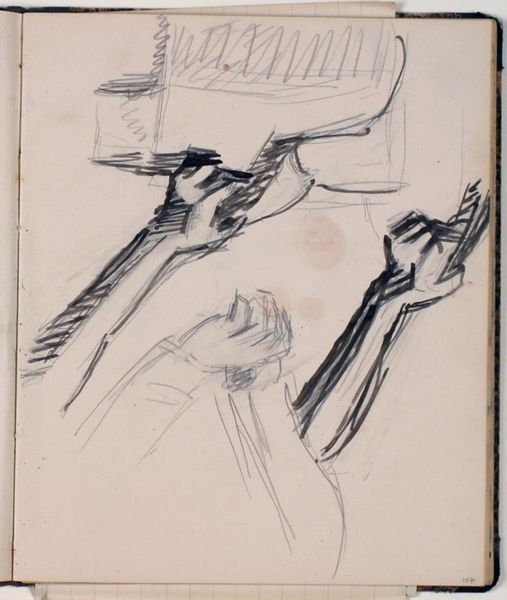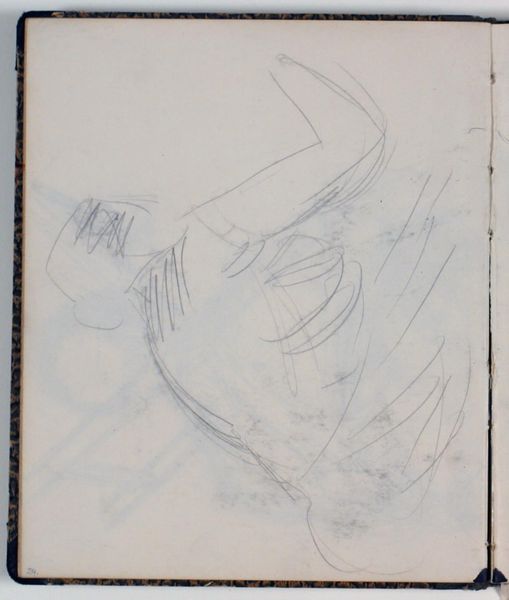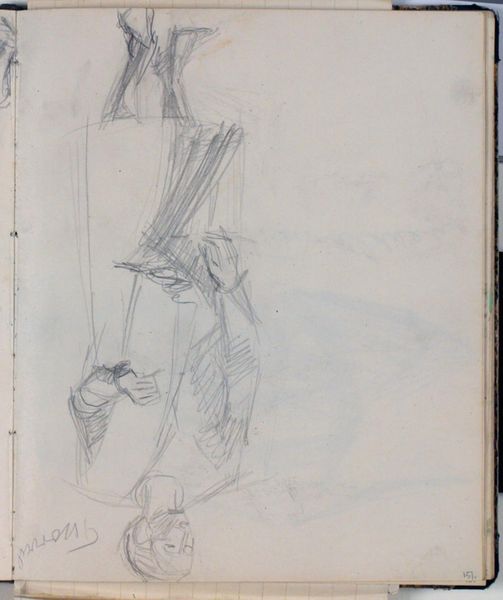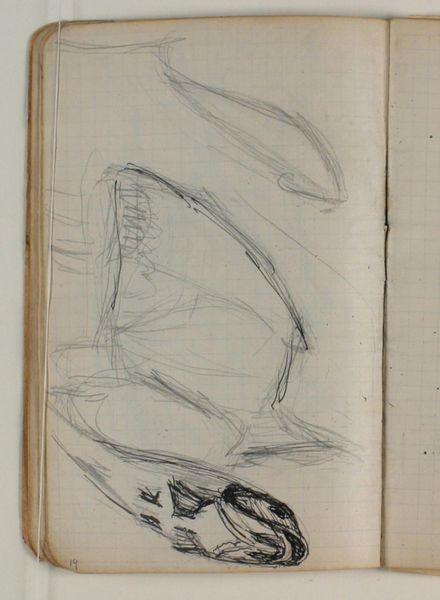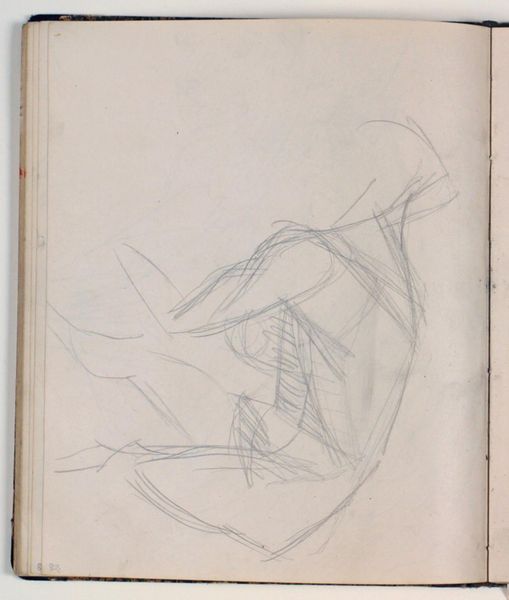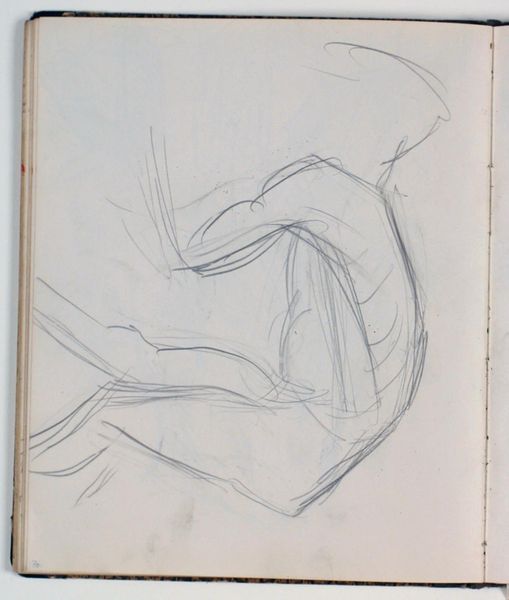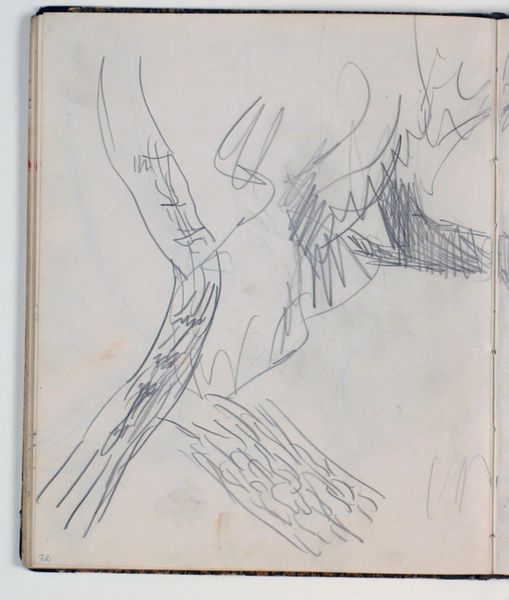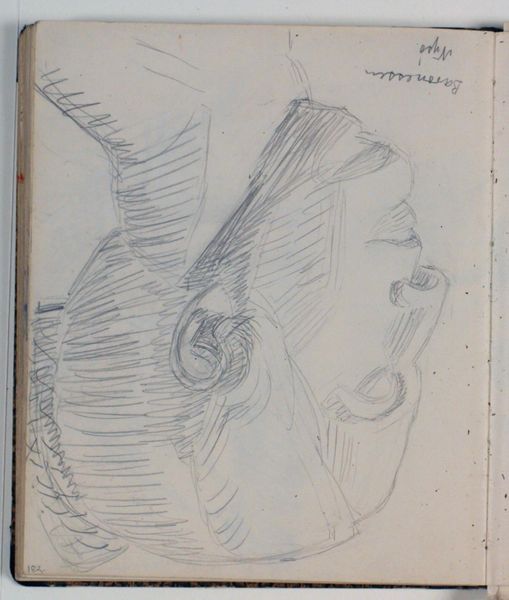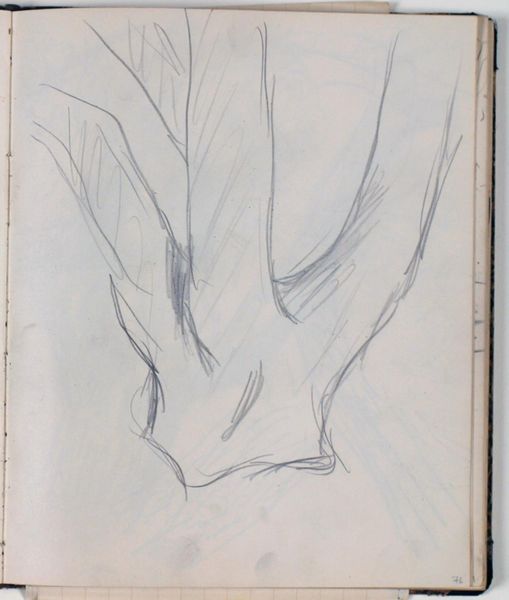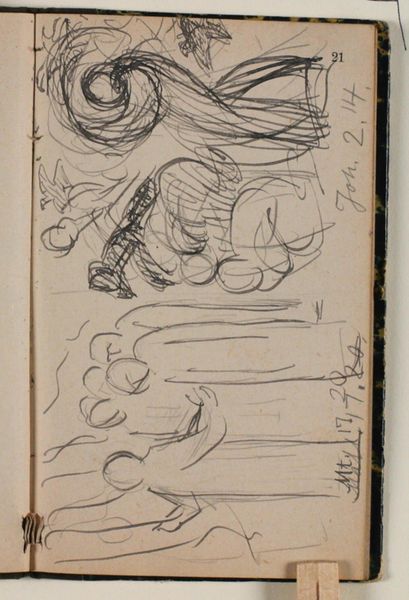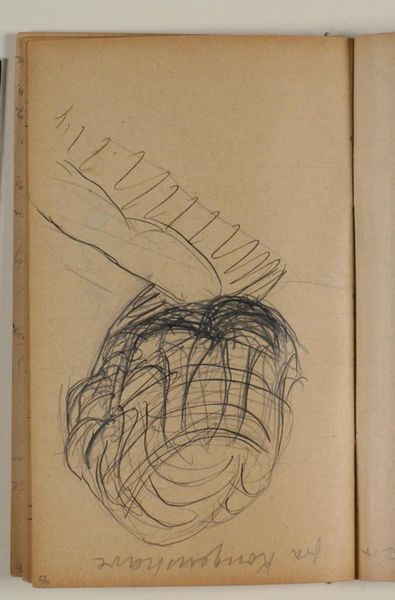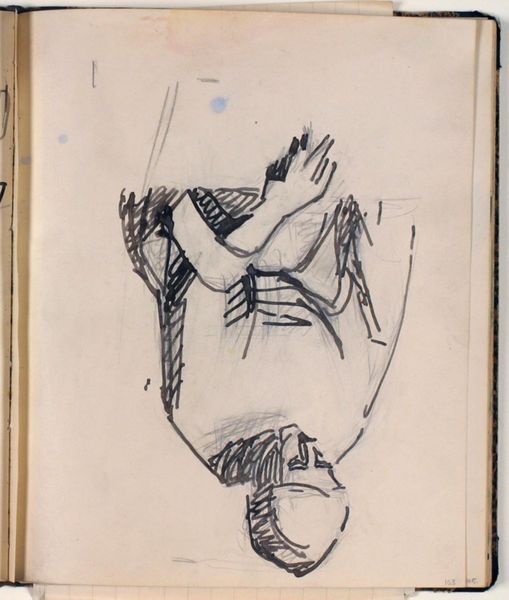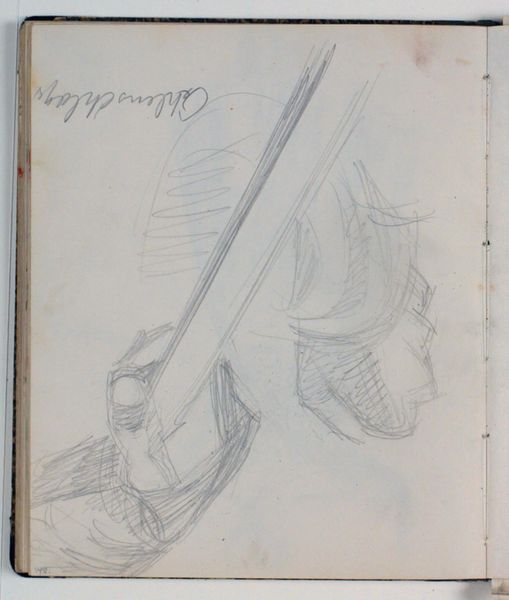
drawing, paper, pencil
#
portrait
#
drawing
#
paper
#
pencil
Dimensions: 226 mm (height) x 185 mm (width) x 112 mm (depth) (monteringsmaal), 221 mm (height) x 184 mm (width) (bladmaal)
Curator: This pencil drawing, dating from 1930-1936, is entitled "Studies of Baroness Stampe" by Niels Larsen Stevns. Editor: My initial response is one of slight agitation. The lines are frantic, creating a sense of incompleteness. It lacks a certain peace, wouldn’t you say? Curator: I find the opposite—a raw honesty. Look at the pencil strokes; they suggest the artist captured Baroness Stampe in fleeting moments. Consider the socio-economic context—this work precedes World War II; what limitations were in place that dictated the production of art using relatively sparse and inexpensive materials, like pencil and paper, becoming essential? Editor: That's an interesting perspective. If you analyze the lines themselves, observe the contrast between the controlled curves and the chaotic cross-hatching. They create dynamic tension, revealing inner emotional complexity. Is it just portraiture, or an expression of artistic exploration? Curator: I lean towards the latter. Portraiture became available to more people through improvements in photography and the democratization of technology during this period. These studies are housed at the SMK – Statens Museum for Kunst, which tells us something about the values ascribed to this work: even sketches contain critical information, and merit display and conservation. It is crucial that we continue to investigate these "lesser" art objects to see the total production processes within Stevns' work. Editor: Yet those scribbled strokes capture an emotional landscape. You are drawn into the mind of Stevns and, indirectly, the soul of Baroness Stampe. Curator: But where do we locate artistic genius? Not in ethereal, unmeasurable “genius”, but the material conditions of art production itself, including labor, artistic intention, economic drivers, and social context. Editor: True. I may view the materiality through the lens of aesthetics, of how Stevns manipulated these humble tools to express profound sentiment, but your emphasis on material conditions has certainly enhanced my understanding of the piece. Curator: It’s been an eye-opening experience for me, too. Your examination through formal qualities emphasizes an appreciation for the finished object.
Comments
No comments
Be the first to comment and join the conversation on the ultimate creative platform.
